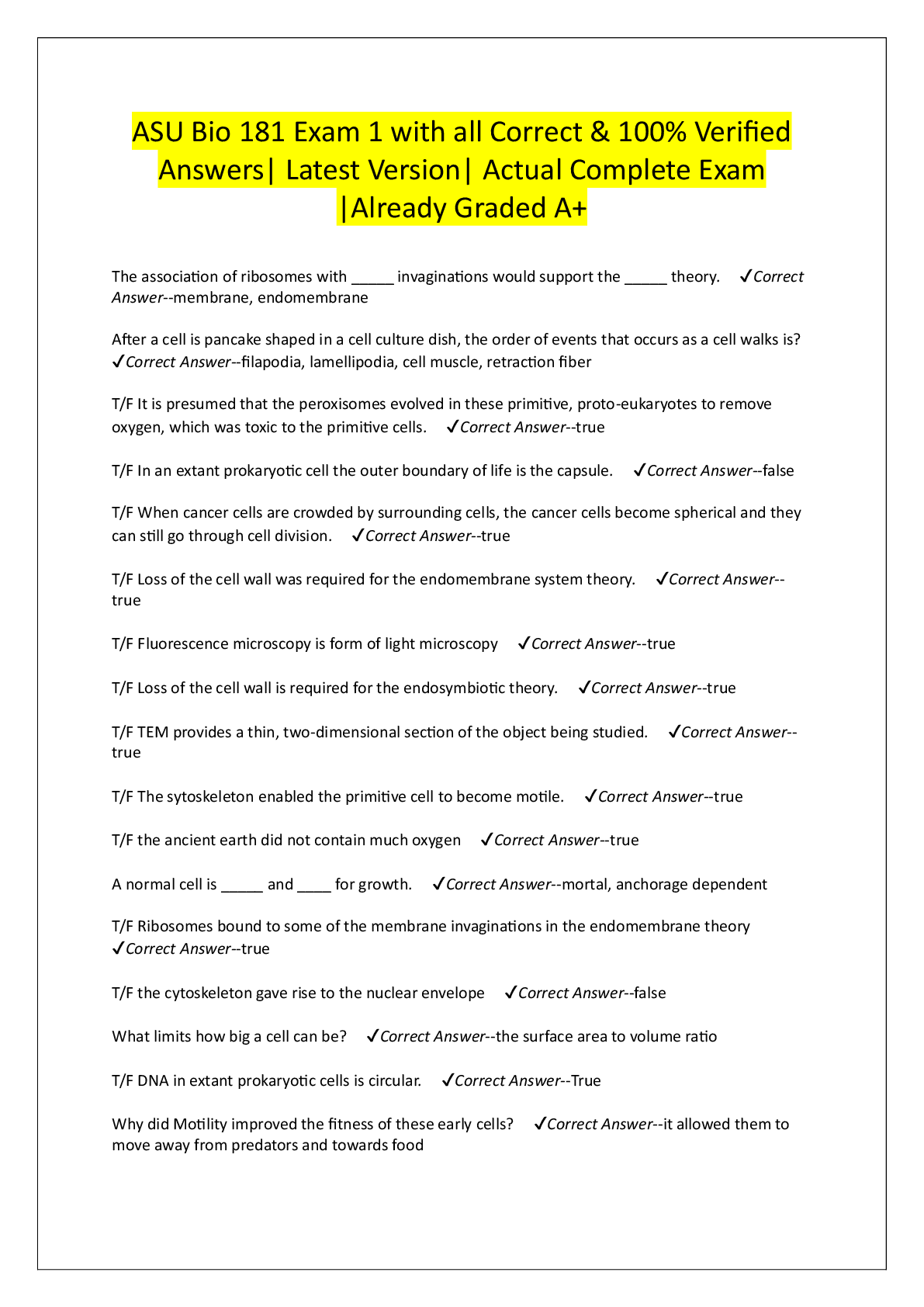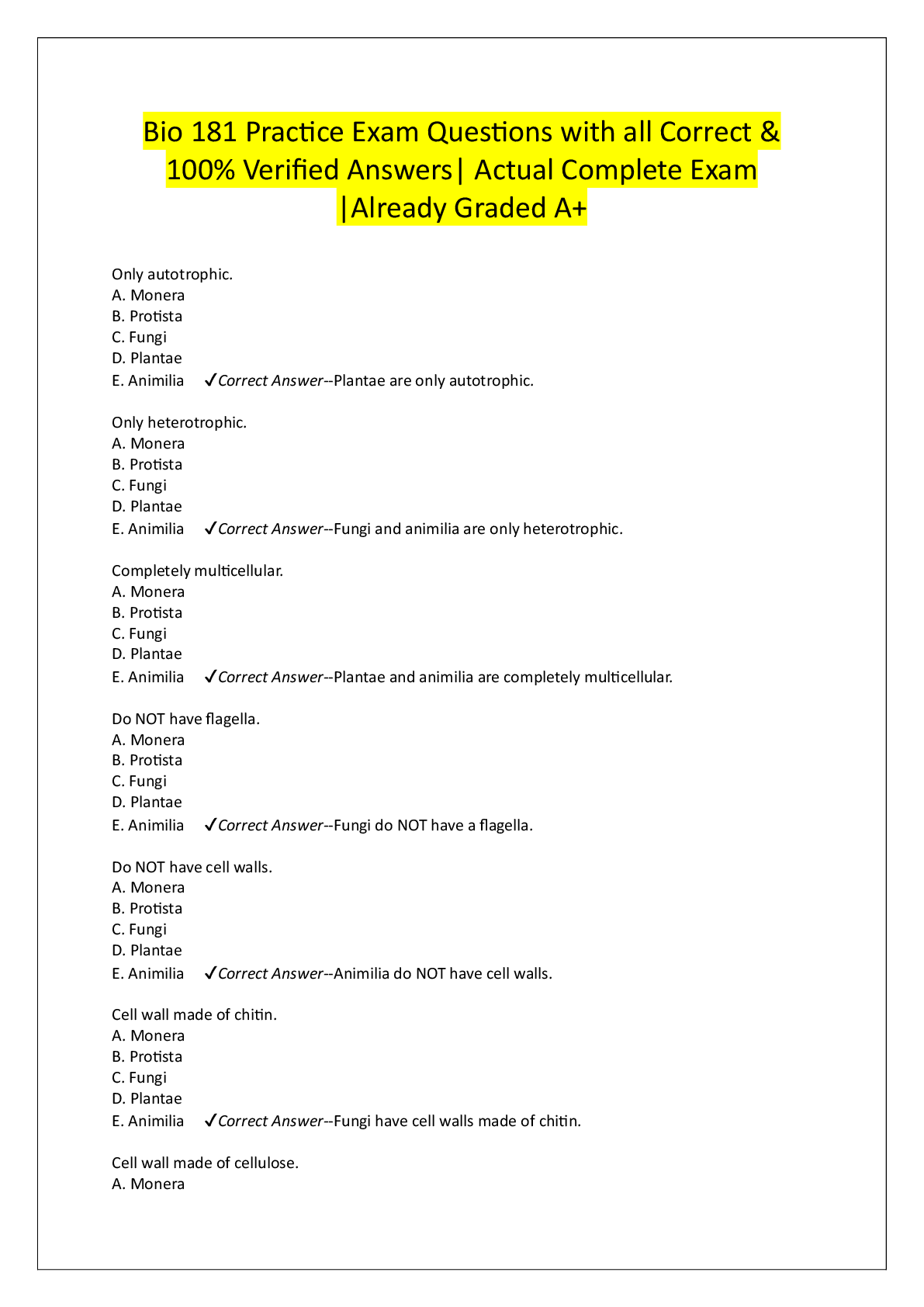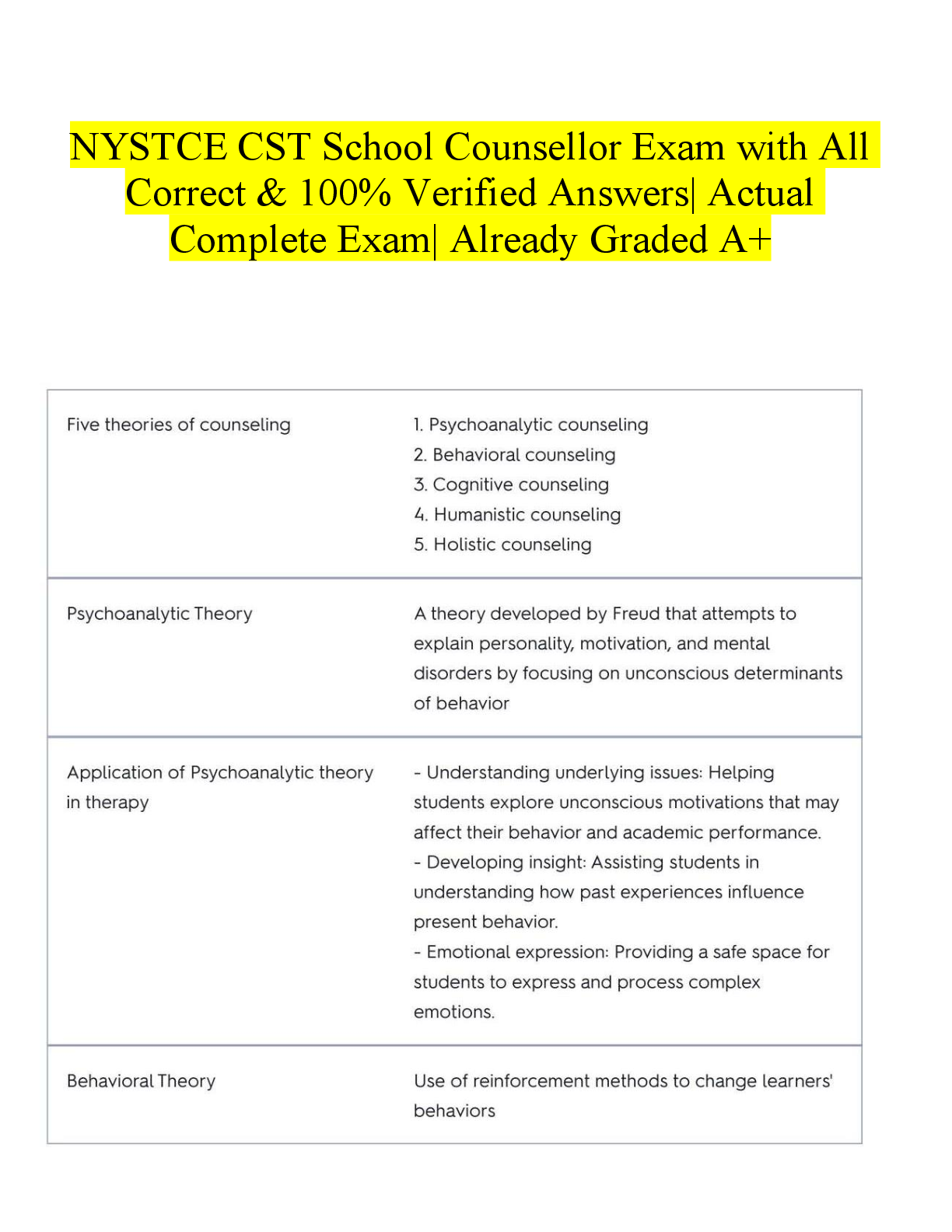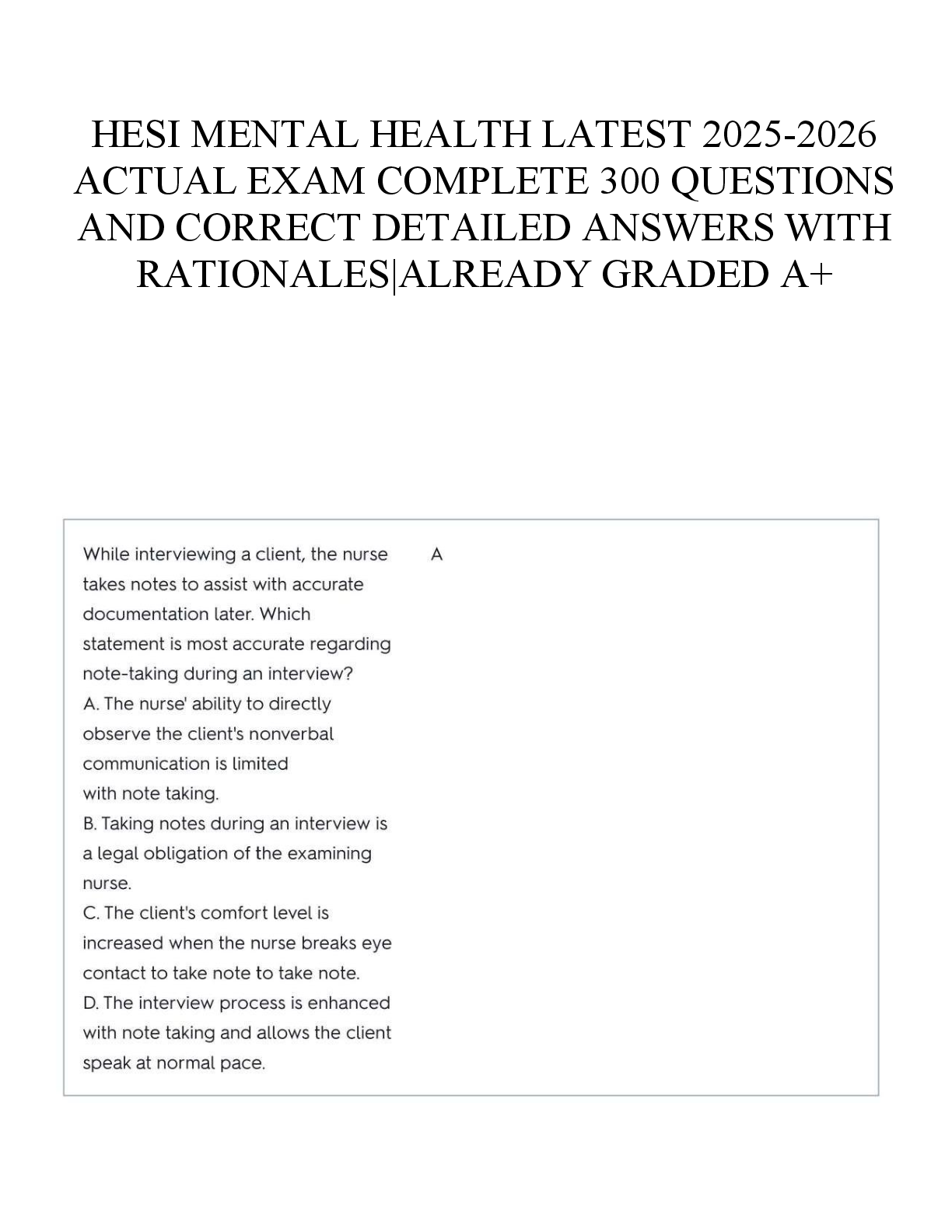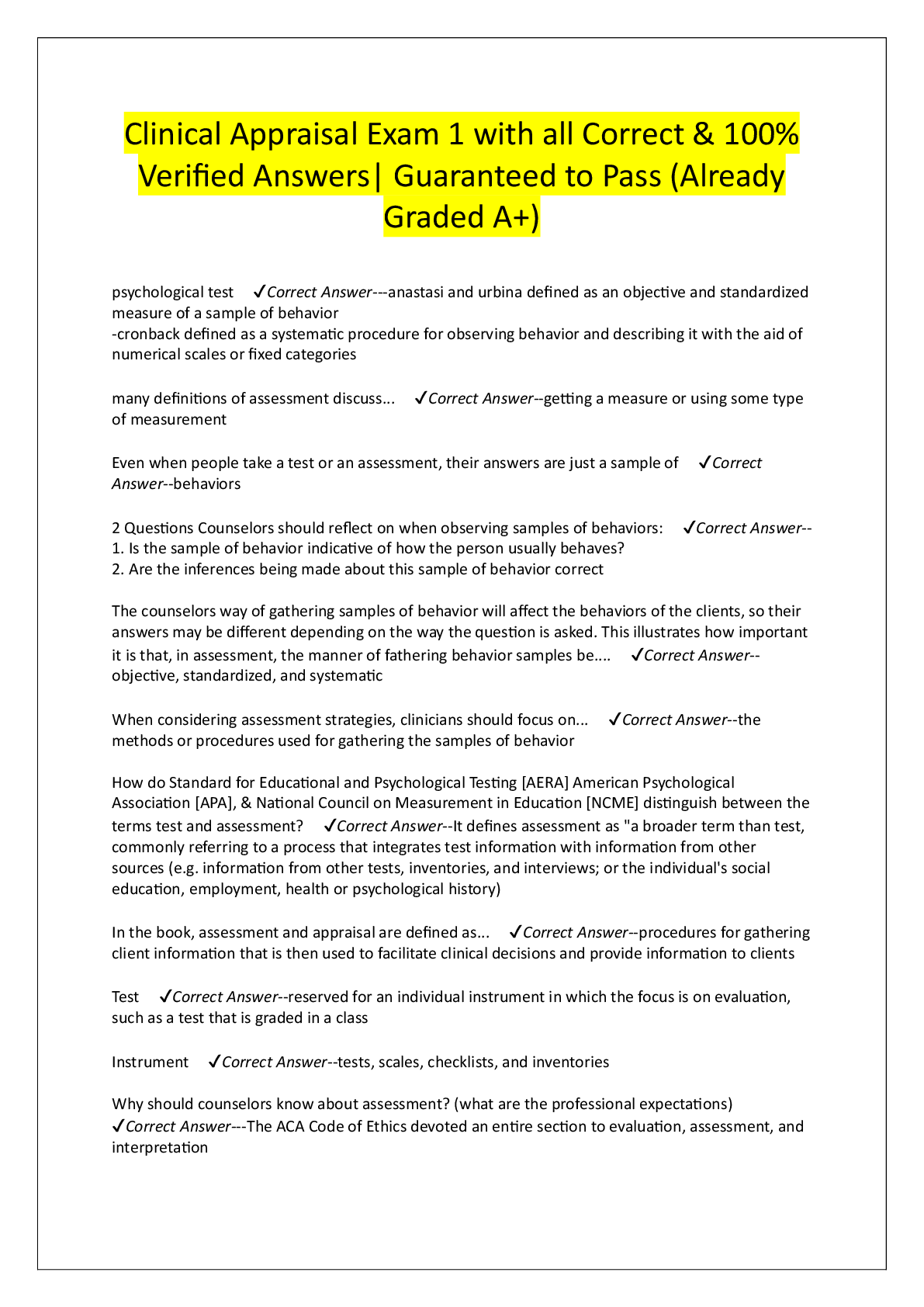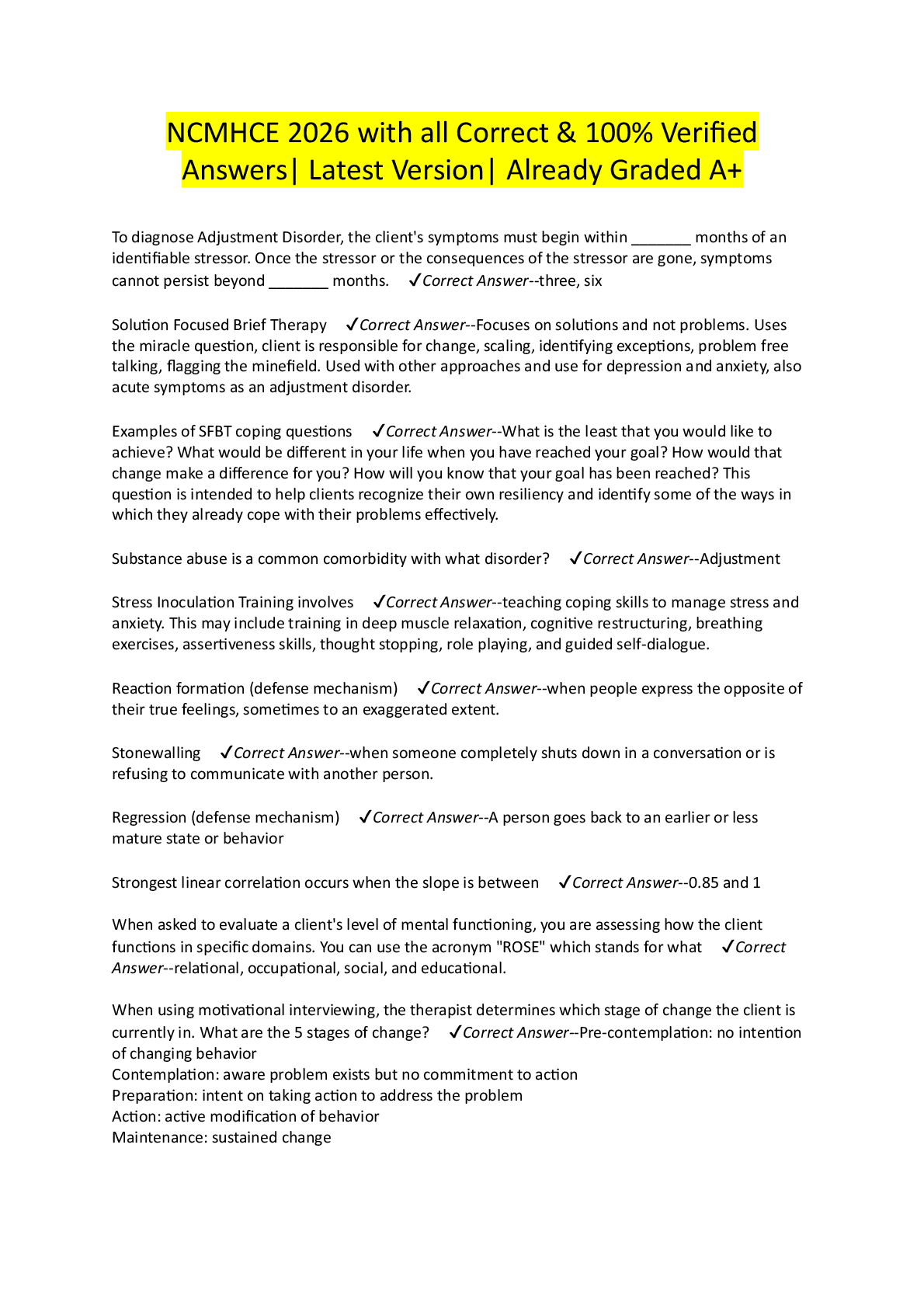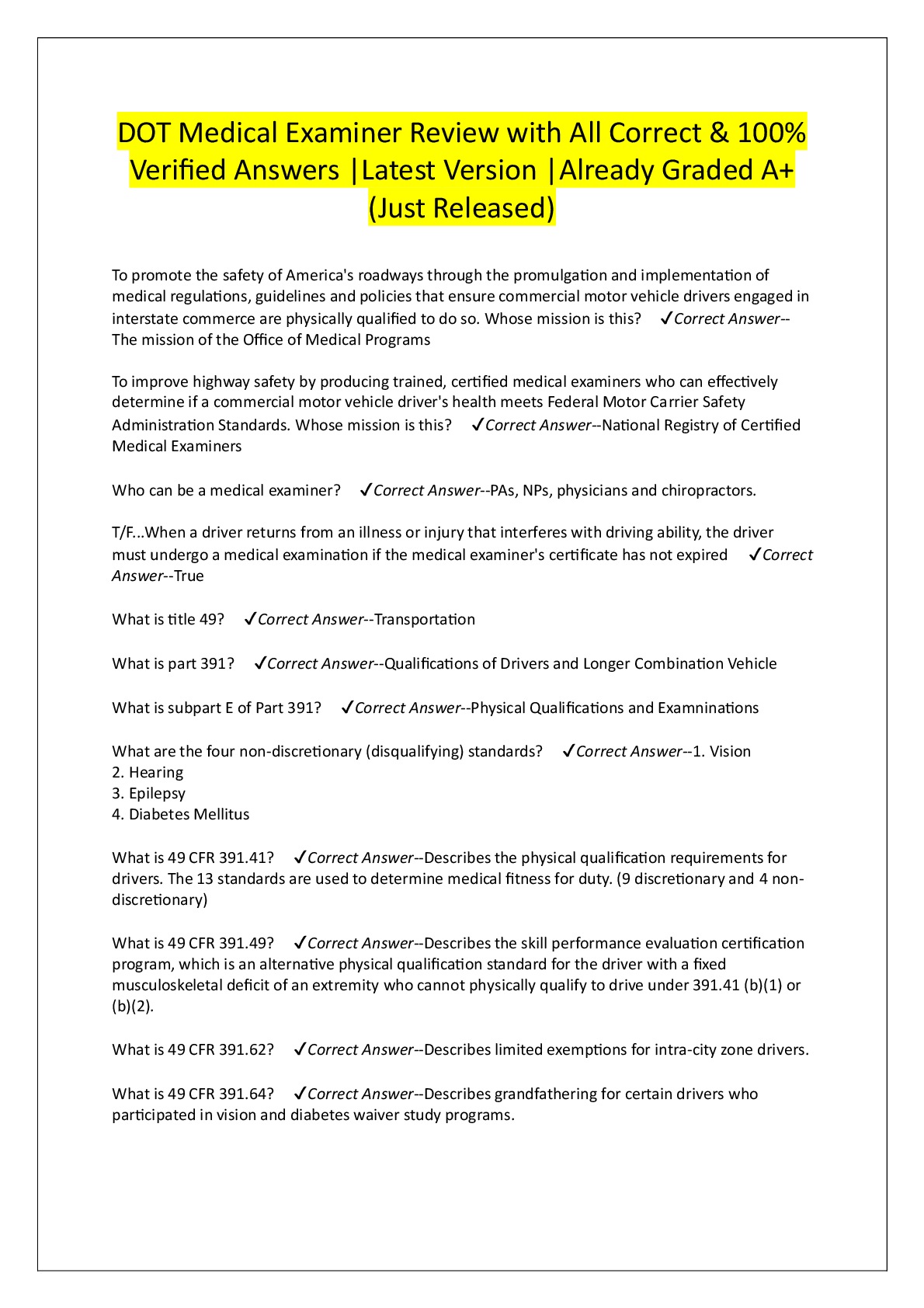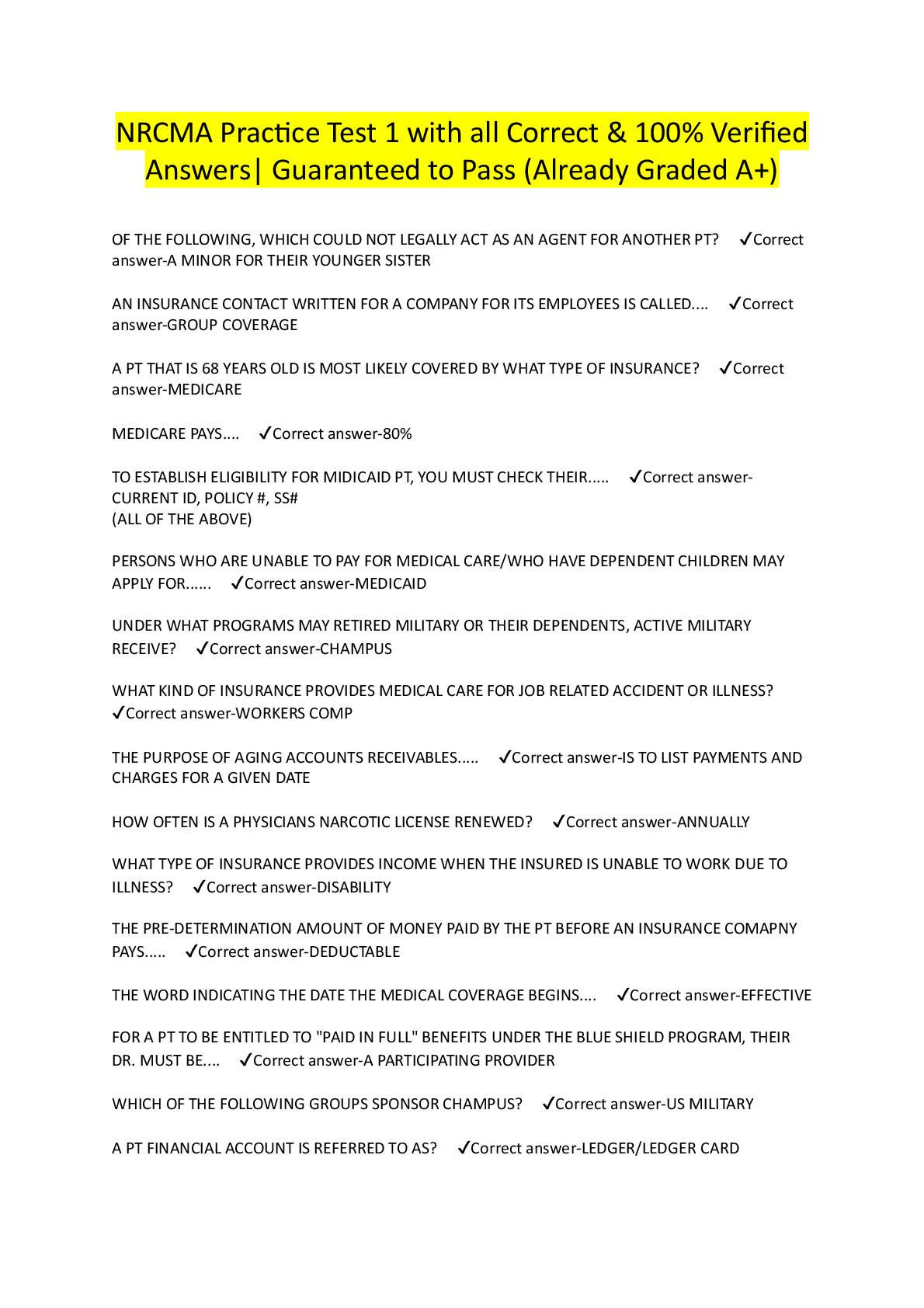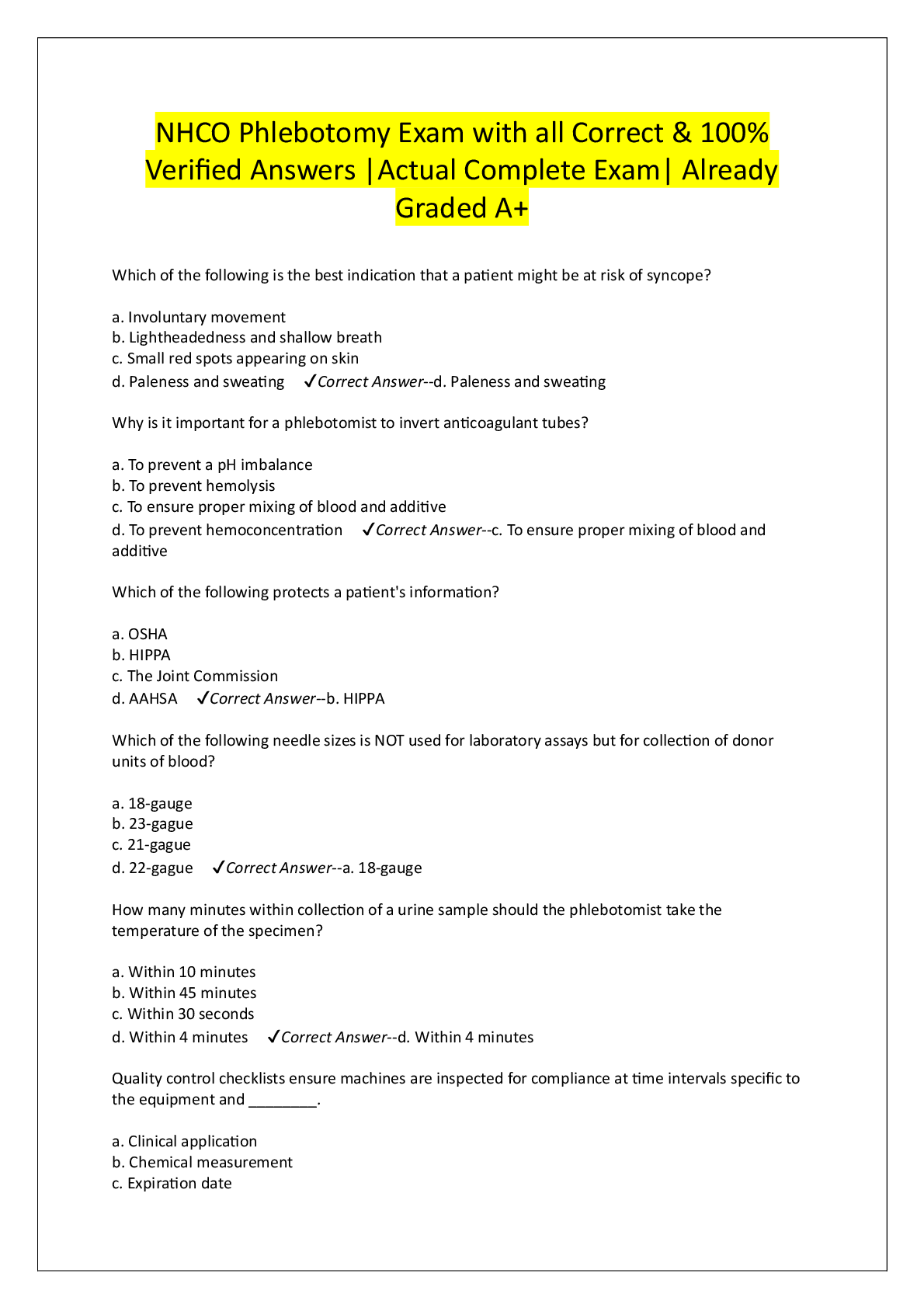History > EXAM > Strayer University - HIST 105 US History II UNIT 2 CHALLENGE 2 QUESTION AND ANSWERS. (All)
Strayer University - HIST 105 US History II UNIT 2 CHALLENGE 2 QUESTION AND ANSWERS.
Document Content and Description Below
US History II UNIT 2 CHALLENGE 2 HIST 105 US History II UNIT 2 CHALLENGE 2: The US and the First World War: 1914-1919 Which statement best describes Woodrow Wilson's evolving idea of "peace wi ... thout victory" rather than remaining neutral? a.) All fighting should immediately cease and Germany should pay reparations to the Allies for starting the war. b.) The end of the war should expand ideals of democracy, free enterprise and self-determination to create a lasting peace. c.) England and Germany should declare a draw and focus on renewed trade instead of fighting. d.) The world should join together to defeat the Central Powers and ultimately eliminate Germany as a nation. Choose the statement that best reflects the relationship between Progressive reform and the United States' entry into World War I. a.) The Selective Service Act required that all men between certain ages register for the draft. b.) Anti-German sentiment contributed to the greater citizen and federal support for Prohibition. c.) American participation in the war revealed to many the contradictions of Progressivism. d.) The demands of wartime mobilization effectively brought Progressive reform to an end. Which statement reflects the position of the Irreconcilables concerning the signing of the Treaty of Versailles and America’s involvement in the proposed League of Nations? a.) “We want this treaty to be ratified, but the president must accept some amendments." b.) “We will reject any partisan efforts to compromise on the contents of this treaty." c.) “We will not consider any aspect of this international treaty." d.) “We fear the League of Nations will allow Germany to grow strong enough to seek revenge.” Read the following excerpt on rioting in Chicago from the Chicago Defender: "Rioters operating in the vicinity of the stock yards, which lies in the heart of white residences west of Halsted street, attacked scores of workers—women and men alike returning from work. Stories of these outrages began to fluster into the black vicinities and hysterical men harangued their fellow to avenge the killings—and soon they, infected with the insanity of the mob, rushed through the streets, drove high powered motor cars or waited for street cars which they attacked with gunfire and stones. Shortly after noon all traffic south of 22nd street and north of 55th street, west of Cottage Grove avenue and east of Wentworth avenue, was stopped with the exception of trolley cars. Whites who entered this zone were set upon with unmeasurable fury. Policemen employed in the disturbed sections were wholly unable to handle the situation. When one did attempt to carry out his duty he was beaten and his gun taken from him. The fury of the mob could not be abated. Mounted police were employed, but to no avail." What does this excerpt reveal about the United States in 1919? a.) As it had been during the Haymarket Affair, Chicago was beset by fears of foreign radicalism. b.) The United States in 1919 suffered from a lack of law and order. c.) Northern cities like Chicago were diverse, but geographically segregated by race. d.) Citizens resisted the draft for World War I in violent ways. Read the following accounts of an incident in Chicago in 1919 that resulted in the deaths of a young African American boy and 37 others. From the Chicago Defender: “The presence of a black face in their vicinity was a signal for a carnival of death, and before any aid could reach the poor, unfortunate one his body reposed in some kindly gutter, his brains spilled over a dirty pavement.” From the Chicago Daily Tribune: “Fists flew and rocks were hurled. Bathers from the colored Twenty-fifth street beach were attracted to the scene of the battling and aided their comrades in driving the whites into the water.” What could explain the different perspectives of each newspaper account? a.) One account was true and the other was false. b.) One account was objective and the other was biased. c.) The newspapers wrote for different audiences. d.) The newspapers failed to check their facts. Which of the following statements was an effect of the Red Scare? a.) The American economy was slow to transition from wartime production to post-war production. b.) The cost of living in the U.S. rose very quickly in a short period of time. c.) Some Americans feared communists were working with labor unions. d.) The headquarters of radical organizations were raided and thousands were arrested. [Show More]
Last updated: 3 years ago
Preview 1 out of 4 pages

Buy this document to get the full access instantly
Instant Download Access after purchase
Buy NowInstant download
We Accept:

Reviews( 0 )
$11.00
Can't find what you want? Try our AI powered Search
Document information
Connected school, study & course
About the document
Uploaded On
Sep 25, 2020
Number of pages
4
Written in
All
Additional information
This document has been written for:
Uploaded
Sep 25, 2020
Downloads
0
Views
118

.png)











